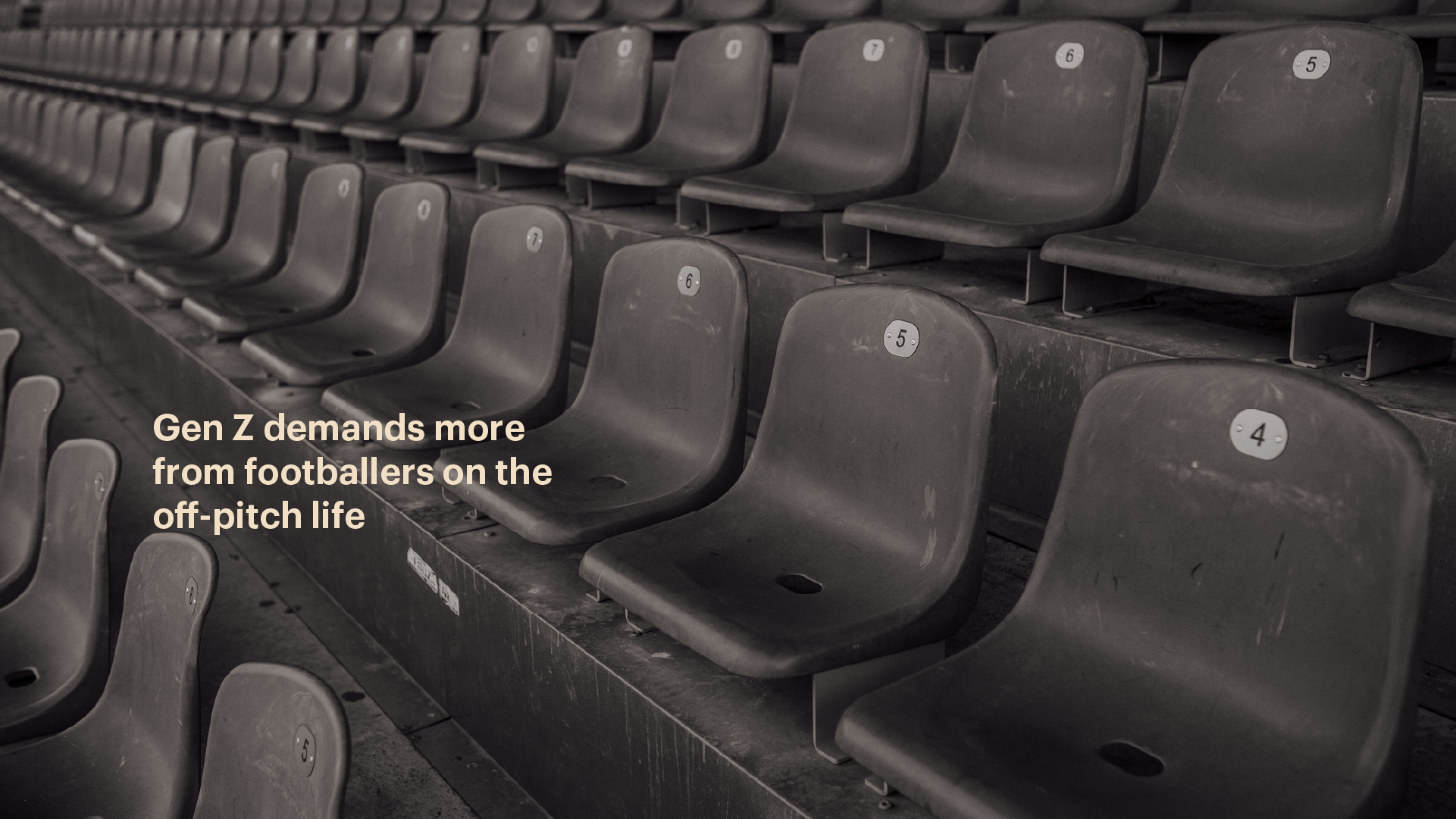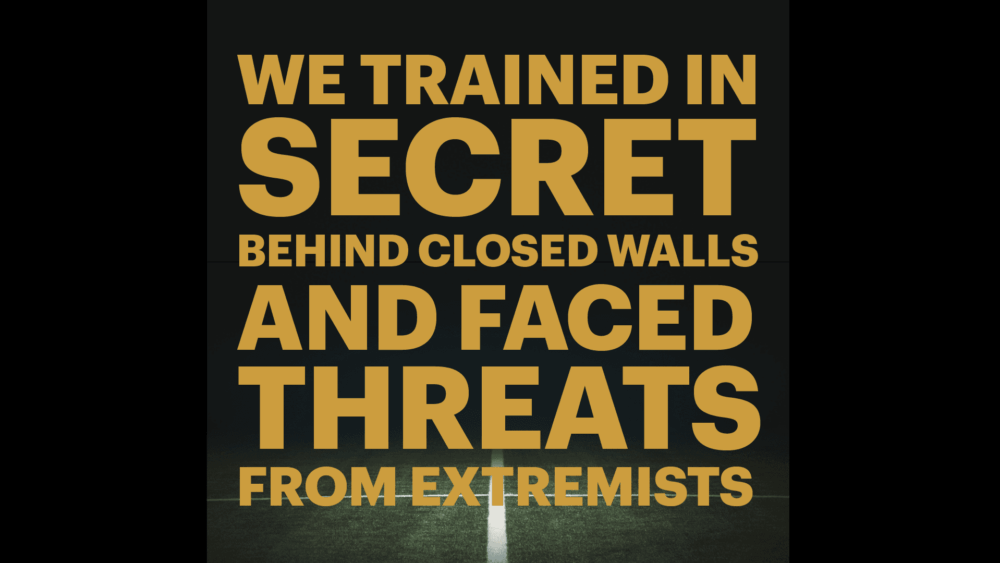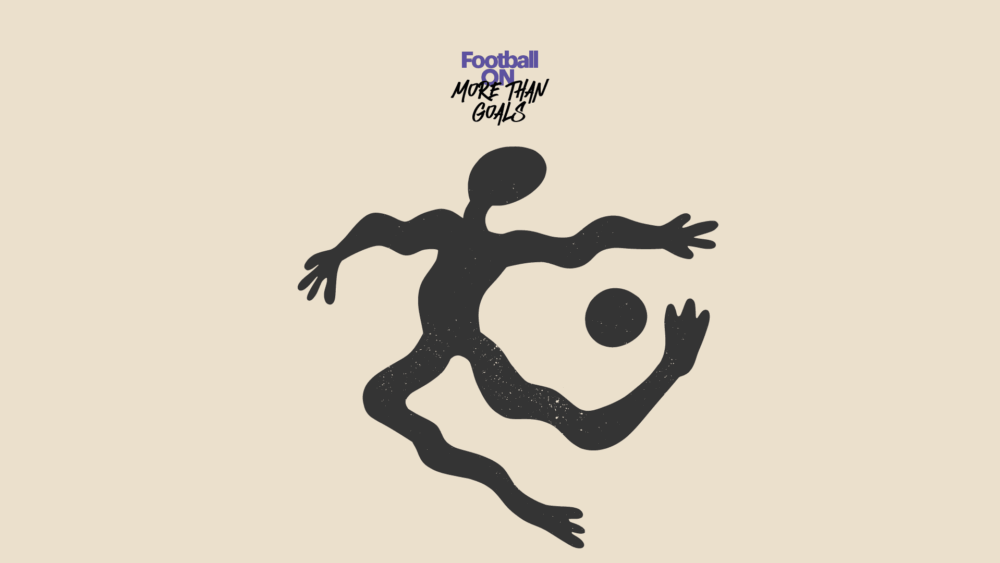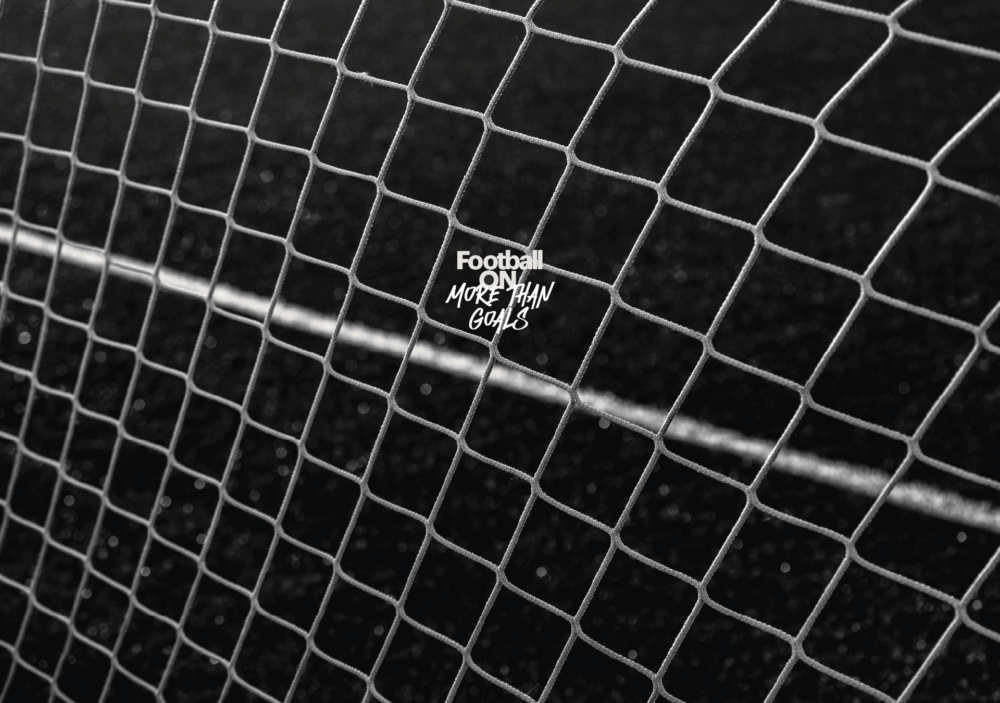
Vladimir Borkovich: “Gen Z demands more from footballers on the off-pitch life”
Dr. Vladimir Borkovich is Head of Strategic Partnerships at Common Goal, an organization that supports vulnerable communities through football. He participates in ETERON’s FootballON: More Than Goals project, talking about the organization’s work, the social power of football, racism on the pitch, the relationship between young people, Gen Z and the sport.
What is the 1% that you are campaigning for at Common Goal?
It concerns the return of 1% of footballers’ annual income to support vulnerable communities around the world. In essence, it is not something we invented. There are different ways to raise money for a common cause, such as corporate social responsibility policies. The story goes back to 2017, when we at Common Goal started this campaign with the idea that the football industry has too much money to spend, great professional athletes are paid too well and it is not rational and socially sustainable for this to happen. We want to give back to vulnerable communities and people a small part of the redistribution of wealth and we aim to do this not in a symbolic way, but in a substantive way.
For us, it is also a way for great football players to show that they understand what is happening in societies, that they can contribute actively and tangibly to social development and that it is not enough to just play a game or give interviews after matches. For us, it is important to be the “home”, the core, the place where all athletes who want to contribute to the development of society and the fight against inequalities; the 1% campaign moves in this direction. Of this 1%, 90% goes to local communities that need it and the remaining 10% we use to operate our organization, to continue our work.
Which football players could we say are the most ardent supporters of your campaign?
There are many athletes who support our project. One of the ardent supporters is Juan Mata, who started supporting us from the beginning and wanted to contribute actively to convince his fellow athletes and influence the football industry more broadly. The movement – because it is about a movement – grew quickly, Matt Hummels and Alex Morgan took it upon themselves, joined the team and today we have reached over 250 athletes with whom we collaborate. We are proud because there is a balance between male and female athletes and we are gradually seeing football teams and federations joining the initiative, such as the Football Association of Wales, the Oceania Football Confederation (OFC), all the countries in the region, but even player representation companies. We have formed a reliable structure and team, all the athletes, coaches, those who participate in the scheme strengthen the purpose and credibility of the project and this is the most important thing for us at the moment. For all of us who started this business with Street Football World back in 2002, it is a life purpose.
Many players, such as Vinicius or Inaki Williams, have been victims of racist attacks both on the pitch and on social media. Are these attacks a reflection of a wider social problem? Can they be addressed?
Every behavior has a root underneath and starts at a young age, from the development of the child. If we do not address the issue of violence and racism at their root, such as some people saying racist slogans in the stadiums, we will not get anywhere. Our goal is to change these behaviors through the family, through the influence of the players, through education, and to shape new standards. In the face of such phenomena, a holistic approach is needed and stereotypes are addressed on and off the pitch. The role of the media and social media is also very important in this direction, because when a young fan, for example, sees someone else in the stands cursing or throwing bananas at a player and is not punished, then the same behavior is reproduced, accepted and multiplied. Someone is not necessarily racist when they adopt or copy such a behavior, they simply imitate a situation when they see that it is acceptable.
But can such phenomena be addressed?
Yes, they can and must be addressed. There are platforms and initiatives, such as the WeAre8 platform, that try to respond to these phenomena, to eradicate them and, above all, to make fans as a whole understand how reprehensible such behaviors are for our society. Otherwise, if such behaviors continue, the impression will begin to be embedded in many people that they are tolerated and that it is okay for them to repeat themselves and happen, that it is cool and that nothing is wrong if they happen.
When someone sees, for example, that Vinicius, who has been the victim of racist attacks, comes out in public and defends himself, not tolerating the same thing happening to him again and again, it creates a situation, a culture of behavior that other players can reproduce and those in the stands can also understand. As a social scientist and psychologist, I know that these behavioral patterns can be addressed with a good example and when the good example is multiplied, only positive results can be achieved. Culture change does not start from top down, from some possibly strict decisions of federations or teams, but from bottom up, from the people themselves, the society itself, the stands themselves. And of course from the players.
Football can be a force for reconciliation in civil conflicts, as in the case of Ivory Coast and Didier Drogba in 2005, but it can also fuel the spark of a conflict, as in the case of the Yugoslav war and the derby between Dinamo Zagreb and Red Star Belgrade in May 1990. How is it possible for football to have such contrasting aspects?
Good question and I must tell you that we are still searching for the answer to it. Football is a global phenomenon, as is the situation in the stands and all this love of the fans for their team. An important interpretation here is that the young world, young people, are often excluded from social reality and developments and turn to the clubs and the fan movement to find a field of action and representation. Personally, I believe that football can be a catalyst for positive developments in society, it can have a significant influence on the development of the society, but at the same time it also has some negative aspects.
If we take the example of Yugoslavia, as you said, the country was already on a path of dissolution, so football was simply integrated into this process and was, so to speak, only one element of this path. We saw Zvonimir Boban kick a policeman in that derby, but what happened that day was only the tip of the iceberg. The tension had been brewing for over 50 years within Yugoslavia. Football is not a panacea, it cannot cure everything; if it were, it would be given as medicine to children, when they were sick for example, they would play football for a year or for a period of time anyway and that would cure them of the illness once and for all. Unfortunately, however, things are not like that and football seems to be more of this idea that can have some positive changes and be evaluated as a social phenomenon. I would often say that the sport confirms Thomas Hobbes’s saying, homo homini lupus, that we are not made for each other as humans, that we develop animalistic behavior among ourselves, but through football we perhaps find the strength to oppose this saying of the English philosopher.
What are the most important obstacles you face when evaluating a project, an action or a collaboration based on football?
The biggest challenge we face is that we cannot unify, gather all the information in one place. Every day we evaluate actions and think about ways to develop and penetrate new, different cultural and social environments, as each country has its own distinct cultural treats. The model we use and promote cannot be the one and only method in what we aim for and what we do as an organization. If, for example, you look at the socio-cultural context in Greece, Malawi and Chile you will see that there are many different situations, many different conditions and many different levels of analysis and influence. The challenge is primarily methodological.
The second challenge has to do with evaluating the impact and influence of football on the life of a young person. The impact it has on their everyday life is, perhaps, limited. It does not exert the same influence as his family, his friends, his school, and we often tend to give football some qualities and powers that are more in the realm of our own imagination. In other words, we have the feeling that if a child comes to a training session, completes his training and then there is a discussion about discrimination or about the fact that football is that field where all kinds of discrimination are demolished, everything will change. We cannot adequately evaluate how football affects his life and this is because we return again to the first challenge, which has to do with data, with the available, measurable data.
However, there is also the other aspect that we discussed earlier about the positive role of football, about the positive power that it exerts, isn’t it?
Yes, it is. This weakness that we identify in football can also become a strength, it can become a comparative advantage. For example, when we talk about combating racism in football and we apply it to children’s training, the same happens in the context of the family, the school, the company of a child, which ultimately means that football can also be a driving force in this direction. In other words, this challenge and this reflection have two aspects.
To put it another way, there is the belief, the appreciation that football does what it does in a positive way but we cannot prove it with specific data. So because there is this difficulty, we put more emphasis on specific projects that can target individuals, on footballers who can be the driving force in the sport, in order to be able to verify this assessment of ours.
After so many years of being professionally involved in the social power of football, how has the game itself helped you to develop as a person and as a professional?
In the past we had great athletes, like Socrates, who had a very big influence on the social development of the sport, just as we also had important personalities in the 1970s, 1980s and 1990s. Today we have more athletes who are more qualified, who study, who go to university, just as we have the media and social media that present positive stories that can have an influence on society. It is something that we did not have in the past. We also have the Gen Z generation that demands more from athletes, that wants to see them off the field, that also follows their off-pitch life significantly. At this level, the role of the football player is very important and is what makes him special in the eyes of society and young people of course. This is understood by the athletes themselves, their families, their circle, their agendas, and thus football develops in two distinct ways: first, on the pitch where it becomes more technical, more complete, faster, more dynamic; second, when the athlete develops his social dimension much more intensely, takes action, evaluates, participates.
Do we have concrete examples of the latter?
Yes, of course. We have, among others, the case of Marcus Rashford in Great Britain, who has made a decisive contribution with his initiatives to combat child poverty and child nutrition, especially during the coronavirus pandemic. Players are increasingly qualified and more “equipped” overall as personalities and there is also an audience to listen to them, an audience that wants to listen to them and follow their example. We still need a few decades for football to become this social force that will cause significant developments, but this process has begun and for the next generation and the generation after that, things will be different.
Also, along with the players, there are clubs that have a significant impact on the development of local societies, with a typical example being Nordsjaelland, a club from Denmark, which has created the Right to Dream Academy with branches in Ghana and Egypt, with activity in Chile and San Diego in the United States. Each player who signs for the team is committed, based on his contract, to giving 1% of his income to support vulnerable communities. In addition to the work of the academy, the club collaborates with many young players from African countries and other regions around the world, and this is also an educational process that is not purely football-related.
Personally, I am optimistic that such examples can be multiplied and that football will ultimately be a helper for good and will continue to evolve more and more. The younger generations demand this and if one looks at it from a commercial perspective, as long as you do not give or offer your audience what they ask for, then you lose influence over them, you become financially weakened, your activity becomes difficult and you cease to have the “push” to carry out your social work.




